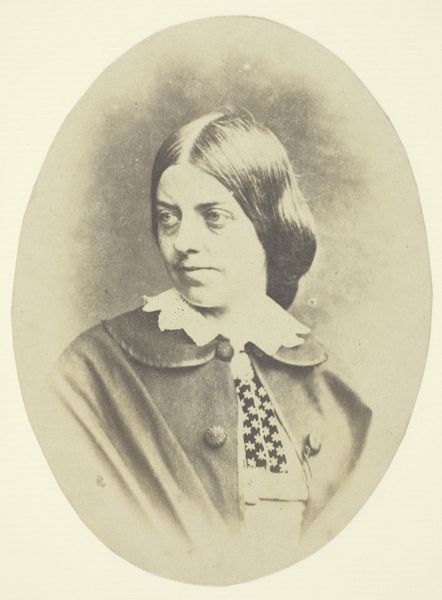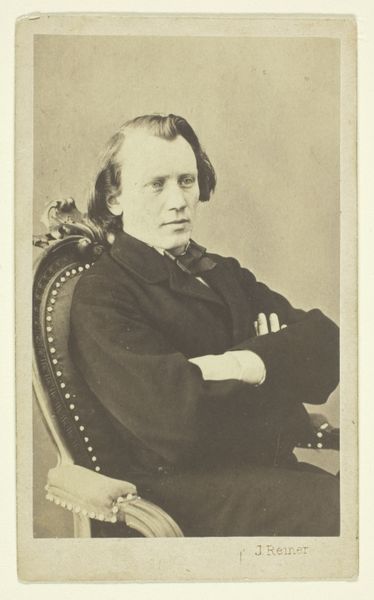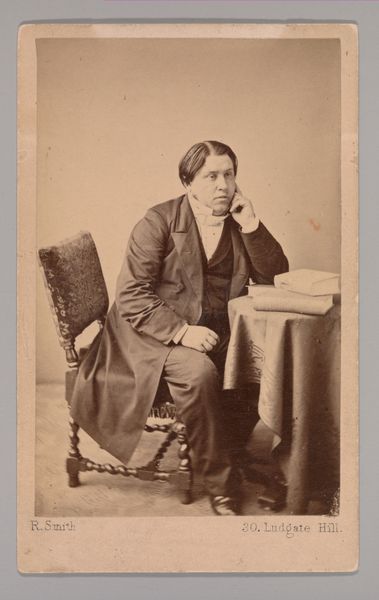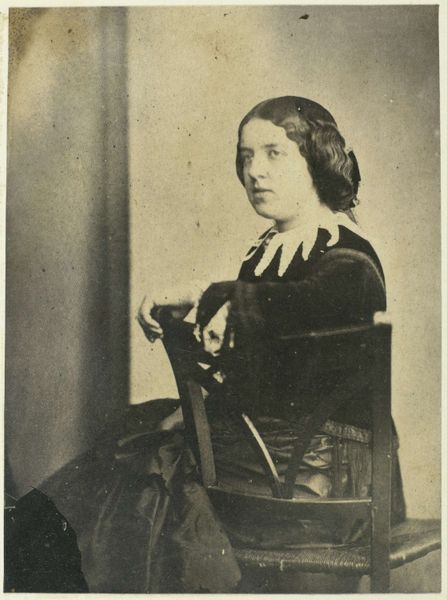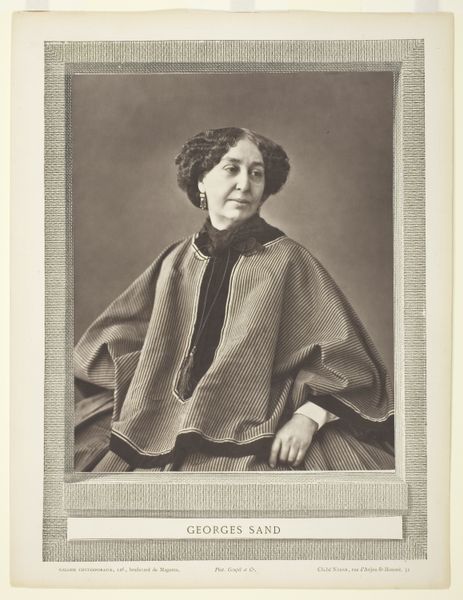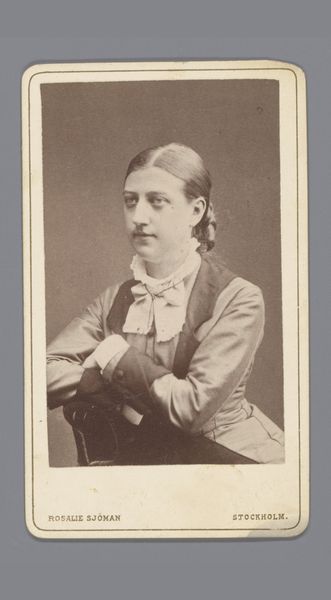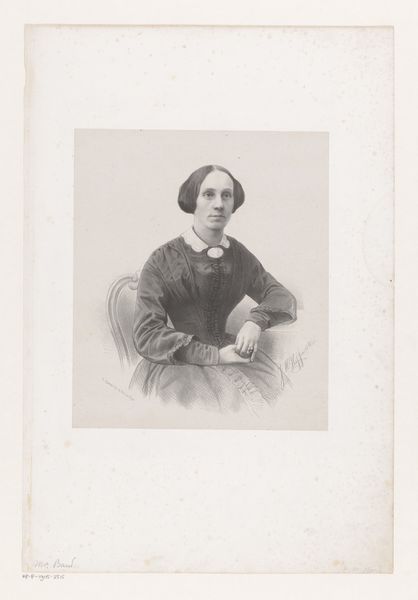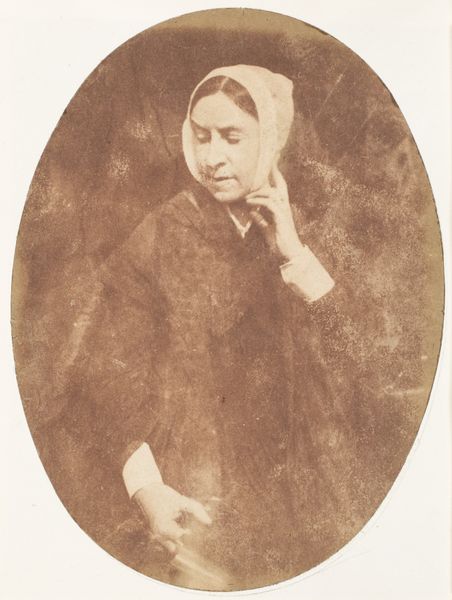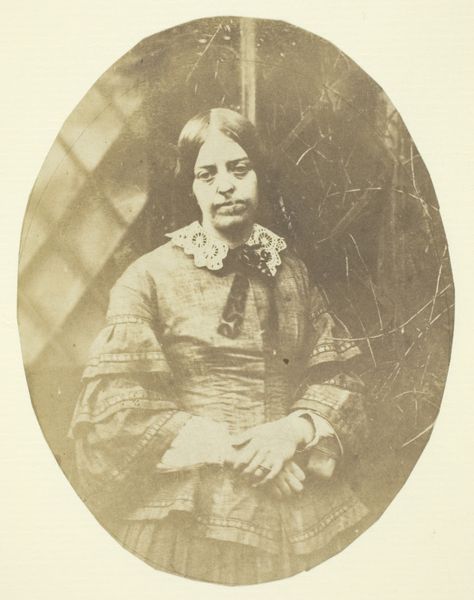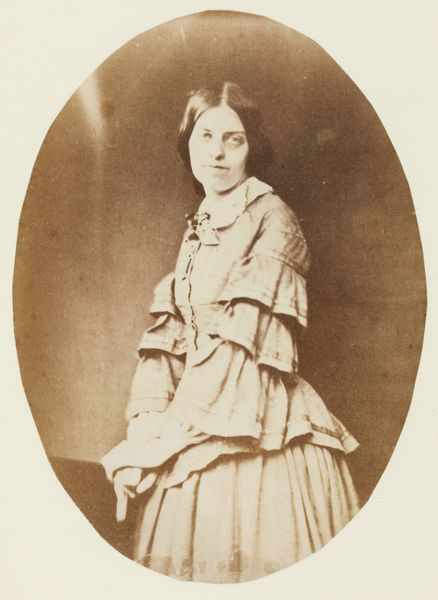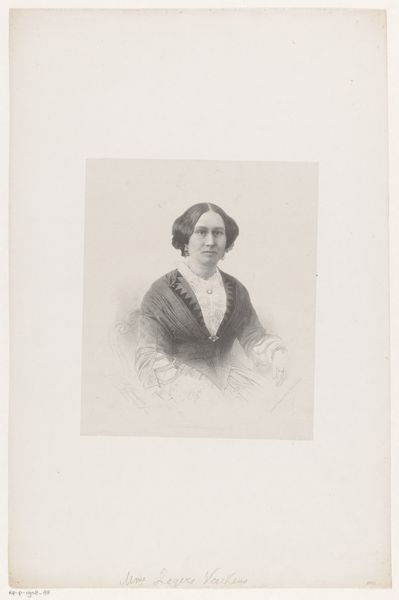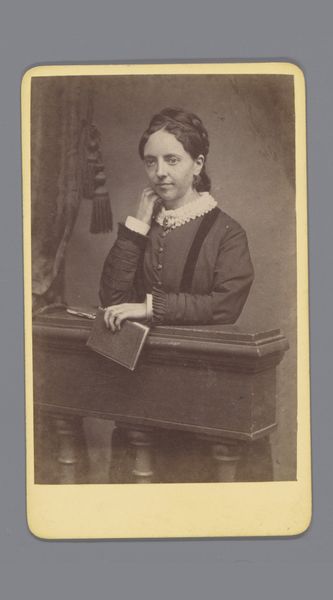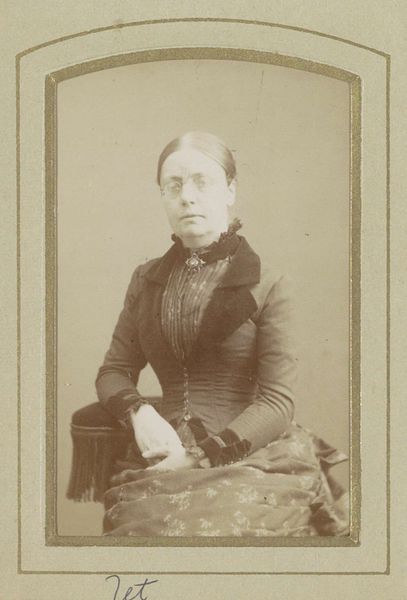
print, paper, photography
#
portrait
#
16_19th-century
# print
#
paper
#
photography
#
portrait reference
#
england
#
portrait drawing
Dimensions: 11.7 × 8.6 cm (image/paper, oval); 17.6 × 12.8 cm (mount)
Copyright: Public Domain
Curator: This is a portrait of Mrs. Craik, made sometime between 1848 and 1860. It is a photograph printed on paper and part of the collection here at The Art Institute of Chicago. Editor: The first thing I notice is the almost ethereal quality of the print; it's quite faded and has a delicate, almost ghostly appearance. It makes you think about the fragility of the medium itself. Curator: Absolutely, and that fragility resonates when we consider the social position of women in England during this period. Craik was a novelist, a profession gaining traction for women, yet still battling many societal expectations and restrictions. Editor: It's intriguing to consider how photography, as a relatively new medium, intersects with those expectations. Photography democratized portraiture, making it accessible beyond the upper classes, yet it still required a certain level of technical expertise. The photographer here is anonymous, a further layer of labor to unpack. Curator: Right. Her gaze, though direct, carries a certain pensiveness. The photograph becomes a powerful tool for self-representation, a negotiation between public persona and private identity at a time when female authors were often scrutinized under patriarchal power structures. How did the simple act of controlling her image speak volumes? Editor: The clothing provides clues: a simple collared coat, partially hiding an ornate blouse. The hand raised near her neck... it all contributes to a crafted image. It begs the question of accessibility of such materials and craftmanship reflected within the composition itself and its correlation with labor standards for this period. Curator: This era saw significant debates surrounding gender, class, and access to education. Figures like Craik, who carved their own paths in literary society, become powerful symbols. This is far from a passive sitter; the photograph can reveal the complex negotiation and aspirations in her persona and generation of authors. Editor: Reflecting upon Mrs. Craik's portrayal emphasizes photography as a labor intensive process—a blend of chemistry, optics and meticulous artistry, ultimately revealing the multifaceted reality that photography possesses beyond simple aesthetic appeal. Curator: Indeed. Viewing this portrait opens an exciting dialogue about the constraints, aspirations, and creative interventions of women in the 19th century. It truly resonates, particularly in this age, as both empowering and a social examination of class.
Comments
No comments
Be the first to comment and join the conversation on the ultimate creative platform.
